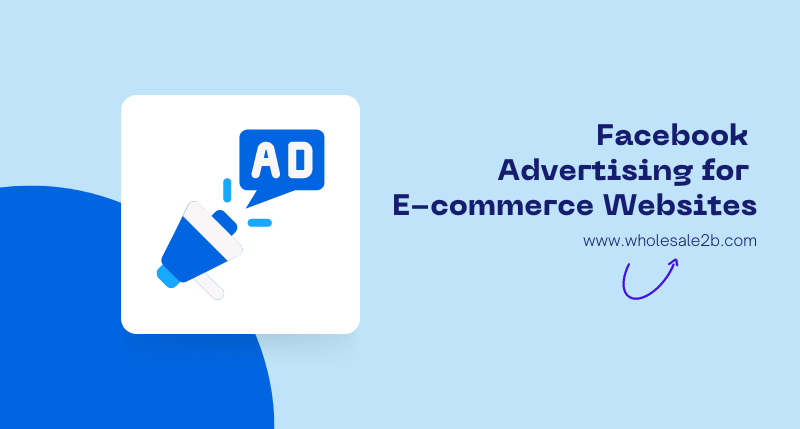
Ultimate Guide to Creating Facebook Ads for E-Commerce
If you’re running an online store, you know that driving traffic to your site can be a real challenge. That’s why Facebook advertising can be a game-changer for your business. With over 2.7 billion active users, Facebook is the largest social media platform in the world, and it offers an unparalleled opportunity to reach your target audience.
But with so many options and features, it can be overwhelming to navigate the world of Facebook ads. That’s where I come in. From crafting attention-grabbing ad copy to optimizing your targeting and ad placements, I’m here to help you get the most out of your Facebook advertising budget.
So let’s dive in and explore the exciting world of Facebook advertising for e-commerce!
Why Facebook Advertising is Important for E-commerce
Facebook advertising is a cost-effective way to reach a large audience with your e-commerce products. The platform allows you to target users based on their interests, behaviors, and demographics. This means that your ads will be shown to people who are most likely to be interested in your products, increasing the chances of them making a purchase.
Another benefit of Facebook ads for e-commerce is that it allows you to retarget users who have already shown interest in your products. For example, if someone visited your website and added a product to their cart but didn’t complete the purchase, you can show them an ad reminding them to come back and make the purchase. This can be a highly effective way to convert users who are already familiar with your brand.
Finally, Facebook ads can help you build brand awareness and increase your reach. Even if users don’t click on your ads, they will still see your brand and products, which can help you stay top of mind when they’re ready to make a purchase.
Understanding Facebook’s Algorithm and How it Affects Advertising
Facebook’s algorithm determines which ads are shown to which users. It takes into account factors such as ad relevance, engagement, and bid amount. To ensure that your ads are shown to the right audience, it’s important to understand how the algorithm works.
Ad relevance is a measure of how well your ad matches the interests of your target audience. Facebook uses machine learning to analyze user behavior and determine which ads are most likely to be relevant to each user. To improve ad relevance, make sure that your ad copy and visuals are tailored to your target audience.
Engagement is a measure of how many users interact with your ad, such as by liking, commenting, or sharing it. Ads with high engagement are more likely to be shown to a wider audience. To increase engagement, try to create ads that are visually appealing and emotionally engaging.
Bid amount is the amount you are willing to pay for each click or impression of your ad. Facebook uses a bidding system to determine which ads are shown to which users. The higher your bid, the more likely your ad is to be shown to your target audience. However, it’s important to balance your bid amount with your advertising budget to ensure that you’re getting the most value for your money.
Setting Up a Facebook Ad Campaign for Your E-commerce Website
To set up a Facebook ad campaign for e-commerce, follow these steps:
- Choose your campaign objective. Facebook offers several campaign objectives, such as traffic, conversions, and catalog sales. Choose the objective that aligns with your advertising goals.
- Define your target audience. Use Facebook’s audience targeting tools to define your target audience based on factors such as age, gender, location, interests, and behaviors.
- Choose your ad placement. Facebook offers several ad placement options, such as in-feed ads, Stories ads, and Messenger ads. Choose the ad placement that will be most effective for your target audience.
- Create your ad. Use Facebook’s ad creation tools to create your ad, including ad copy, visuals, and call-to-action.
- Set your budget and bid amount. Determine how much you’re willing to spend on your ad campaign and set your bid amount accordingly.
- Launch your ad campaign. Once you’ve reviewed and approved your ad, launch your campaign and monitor its performance.
Choosing the Right Ad Format
Facebook offers several ad formats that are well-suited for e-commerce, including:
- Carousel ads. Carousel ads allow you to showcase multiple products in a single ad. This can be a highly effective way to promote a range of products or highlight different features of a single product.
- Collection ads. Collection ads allow you to create an immersive shopping experience on Facebook. Users can browse through multiple products and make purchases without ever leaving the platform.
- Dynamic ads. Dynamic ads allow you to automatically promote products to users based on their browsing history or purchase behavior. This can be a highly effective way to retarget users who have already shown interest in your products.
- Video ads. Video ads can be a highly engaging way to showcase your products and create emotional connections with your target audience. Try to keep your video ads short and visually compelling to maximize engagement.

Targeting Your Audience for Your E-commerce Store
Targeting your audience is one of the most important factors in the success of your Facebook ad campaign. To effectively target your audience, consider the following factors:
- Demographics. Consider factors such as age, gender, and location to ensure that your ad is shown to the right audience.
- Interests. Use Facebook’s interest targeting tools to target users who are interested in topics related to your products.
- Behaviors. Target users based on their behaviors, such as their purchase history or their engagement with your Facebook page.
- Lookalike audiences. Use Facebook’s lookalike audience feature to target users who are similar to your existing customers.
- Retargeting. Retarget users who have already shown interest in your products, such as by visiting your website or adding products to their cart.
Creating Effective Ad Copy and Visuals
To create effective ad copy and visuals for e-commerce, consider the following tips:
- Use high-quality visuals. Use visually appealing images or videos that showcase your products in the best light.
- Keep your copy short and to the point. Use attention-grabbing headlines and concise ad copy to quickly convey the benefits of your products.
- Use emotional appeals. Use emotional appeals, such as humor or nostalgia, to create a connection with your target audience.
- Highlight product features and benefits. Use ad copy and visuals to highlight the features and benefits of your products, such as their quality, durability, or affordability.
Tracking and Analyzing Your Ad Performance on Facebook
To track and analyze your e-commerce ad performance on Facebook, use Facebook’s Ads Manager tool. This tool allows you to monitor the performance of your ad campaign and make adjustments as needed. Consider the following metrics when analyzing your ad performance:
- Click-through rate. This measures the percentage of users who clicked on your ad. A higher click-through rate indicates that your ad is resonating with your target audience.
- Conversion rate. This measures the percentage of users who completed a desired action, such as making a purchase. A higher conversion rate indicates that your ad is effective at driving sales.
- Cost per click. This measures the amount you’re paying for each click on your ad. A lower cost per click indicates that you’re getting more value for your advertising budget.
Common Mistakes to Avoid in Facebook Advertising
To ensure the success of your ad campaign, avoid the following common mistakes:
- Failing to define your target audience. Without a clearly defined target audience, your ad is unlikely to reach the right users.
- Using poor-quality visuals or ad copy. Poor-quality visuals or ad copy can turn off potential customers and reduce the effectiveness of your ad.
- Neglecting to track and analyze your ad performance. Without regular monitoring and analysis, you won’t be able to make adjustments to improve the effectiveness of your ad.
- Overcomplicating your ad campaign. Keep your ad campaign simple and focused to ensure that your message is clear and effective.
Conclusion and Next Steps for Running Successful Facebook Ads for Your E-commerce Business
Facebook advertising can be a highly effective way to drive traffic and sales for your e-commerce business. By understanding Facebook’s algorithm, choosing the right ad format, targeting your audience effectively, and creating compelling ad copy and visuals, you can create a successful Facebook ad campaign.
To ensure its ongoing success, track and analyze your ad performance regularly and make adjustments as needed. With the right approach, Facebook advertising can help you take your e-commerce business to the next level.
Take Your Time To Review Our Products & Suppliers
REGISTER FOR FREENo Credit Card Needed








